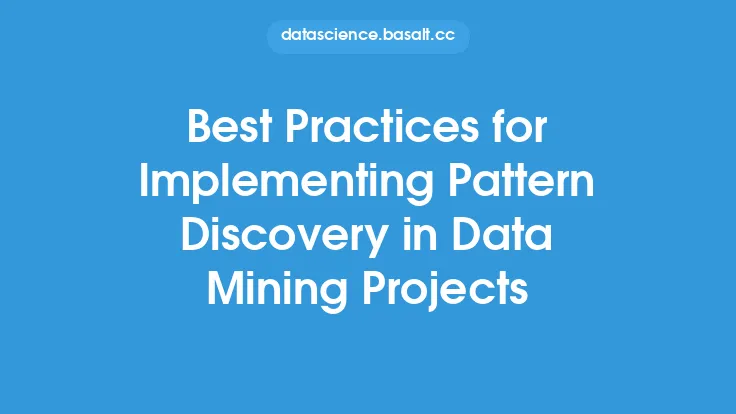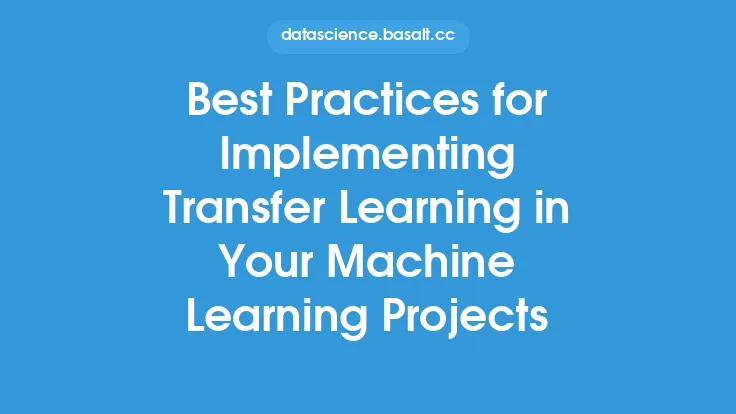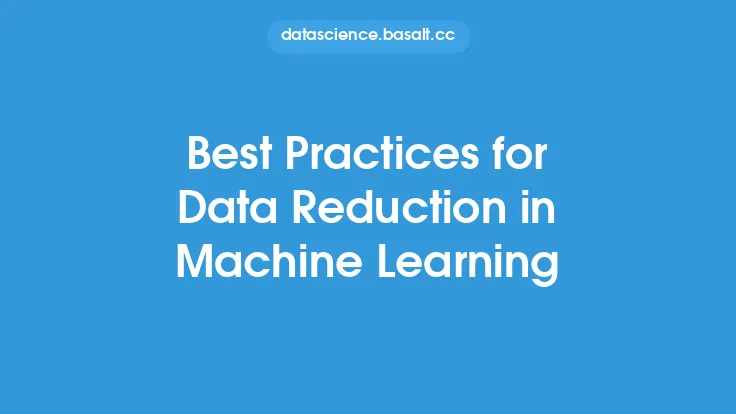Implementing data reduction in data mining projects is a crucial step to ensure the quality and accuracy of the results. Data reduction is the process of selecting and transforming the most relevant data to minimize the dimensionality and size of the dataset, while preserving the most important information. This process is essential to improve the performance of data mining models, reduce computational costs, and enhance the interpretability of the results. In this article, we will discuss the best practices for implementing data reduction in data mining projects.
Introduction to Data Reduction
Data reduction is a technique used to reduce the number of features or dimensions in a dataset, while retaining the most important information. The goal of data reduction is to identify the most relevant features that contribute to the underlying patterns and relationships in the data. By reducing the dimensionality of the data, data reduction helps to improve the performance of data mining models, reduce overfitting, and enhance the interpretability of the results. There are several data reduction techniques, including feature selection, dimensionality reduction, and data aggregation.
Preprocessing and Data Cleaning
Before implementing data reduction, it is essential to preprocess and clean the data. Preprocessing involves transforming the data into a suitable format for analysis, while data cleaning involves identifying and correcting errors, handling missing values, and removing outliers. Preprocessing and data cleaning are critical steps to ensure the quality and accuracy of the data. Some common preprocessing techniques include data normalization, feature scaling, and encoding categorical variables. Data cleaning involves identifying and correcting errors, handling missing values, and removing outliers.
Feature Selection Methods
Feature selection is a data reduction technique that involves selecting the most relevant features that contribute to the underlying patterns and relationships in the data. There are several feature selection methods, including filter methods, wrapper methods, and embedded methods. Filter methods evaluate the relevance of each feature based on statistical measures, such as correlation and mutual information. Wrapper methods use a machine learning algorithm to evaluate the performance of different feature subsets. Embedded methods integrate feature selection into the machine learning algorithm. Some common feature selection methods include recursive feature elimination, LASSO regression, and random forest feature importance.
Dimensionality Reduction Methods
Dimensionality reduction is a data reduction technique that involves reducing the number of features or dimensions in a dataset, while retaining the most important information. There are several dimensionality reduction methods, including principal component analysis (PCA), singular value decomposition (SVD), and t-distributed Stochastic Neighbor Embedding (t-SNE). PCA is a linear dimensionality reduction method that projects the data onto a lower-dimensional space using orthogonal transformations. SVD is a linear dimensionality reduction method that decomposes the data into three matrices: U, Σ, and V. t-SNE is a non-linear dimensionality reduction method that maps the data to a lower-dimensional space using a non-linear transformation.
Data Aggregation Methods
Data aggregation is a data reduction technique that involves combining multiple features or dimensions into a single feature or dimension. There are several data aggregation methods, including mean aggregation, median aggregation, and mode aggregation. Mean aggregation involves calculating the mean of multiple features or dimensions. Median aggregation involves calculating the median of multiple features or dimensions. Mode aggregation involves calculating the mode of multiple features or dimensions.
Evaluating the Effectiveness of Data Reduction
Evaluating the effectiveness of data reduction is critical to ensure that the reduced dataset retains the most important information. There are several metrics to evaluate the effectiveness of data reduction, including accuracy, precision, recall, and F1-score. Accuracy measures the proportion of correctly classified instances. Precision measures the proportion of true positives among all positive predictions. Recall measures the proportion of true positives among all actual positive instances. F1-score measures the harmonic mean of precision and recall.
Implementing Data Reduction in Practice
Implementing data reduction in practice involves several steps, including data preprocessing, feature selection, dimensionality reduction, and data aggregation. The first step is to preprocess the data by transforming it into a suitable format for analysis. The next step is to select the most relevant features using feature selection methods. The third step is to reduce the dimensionality of the data using dimensionality reduction methods. The final step is to aggregate the data using data aggregation methods. It is essential to evaluate the effectiveness of data reduction using metrics such as accuracy, precision, recall, and F1-score.
Common Challenges and Limitations
Implementing data reduction in data mining projects can be challenging, and there are several common challenges and limitations. One of the common challenges is selecting the most relevant features that contribute to the underlying patterns and relationships in the data. Another challenge is evaluating the effectiveness of data reduction using metrics such as accuracy, precision, recall, and F1-score. Some common limitations of data reduction include loss of information, overfitting, and underfitting. Loss of information occurs when the reduced dataset does not retain the most important information. Overfitting occurs when the model is too complex and fits the noise in the data. Underfitting occurs when the model is too simple and fails to capture the underlying patterns and relationships in the data.
Best Practices and Recommendations
To implement data reduction effectively in data mining projects, there are several best practices and recommendations. The first best practice is to preprocess and clean the data before implementing data reduction. The second best practice is to select the most relevant features using feature selection methods. The third best practice is to reduce the dimensionality of the data using dimensionality reduction methods. The fourth best practice is to aggregate the data using data aggregation methods. The final best practice is to evaluate the effectiveness of data reduction using metrics such as accuracy, precision, recall, and F1-score. Some common recommendations include using multiple data reduction techniques, evaluating the effectiveness of data reduction using multiple metrics, and using domain knowledge to select the most relevant features.
Conclusion
Implementing data reduction in data mining projects is a crucial step to ensure the quality and accuracy of the results. Data reduction is a technique used to reduce the number of features or dimensions in a dataset, while retaining the most important information. By following the best practices and recommendations outlined in this article, data miners can effectively implement data reduction in their projects and improve the performance of their models. Remember to preprocess and clean the data, select the most relevant features, reduce the dimensionality of the data, aggregate the data, and evaluate the effectiveness of data reduction using multiple metrics. By doing so, data miners can unlock the full potential of their data and gain valuable insights that can inform business decisions and drive growth.





